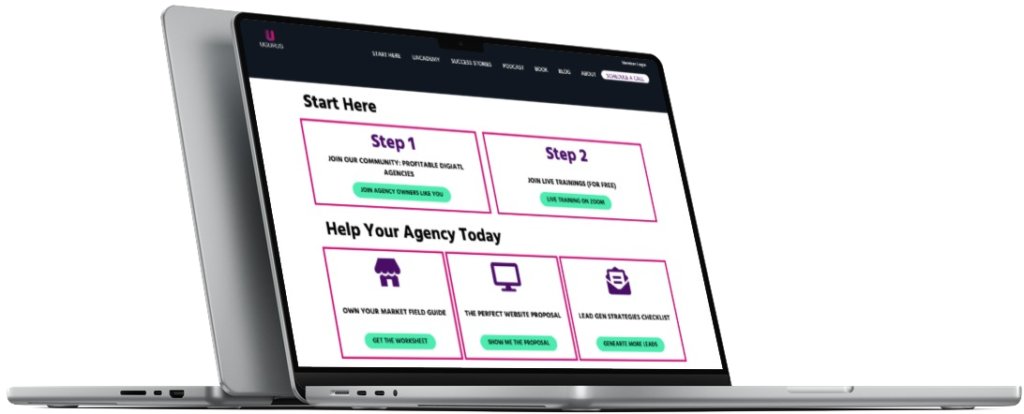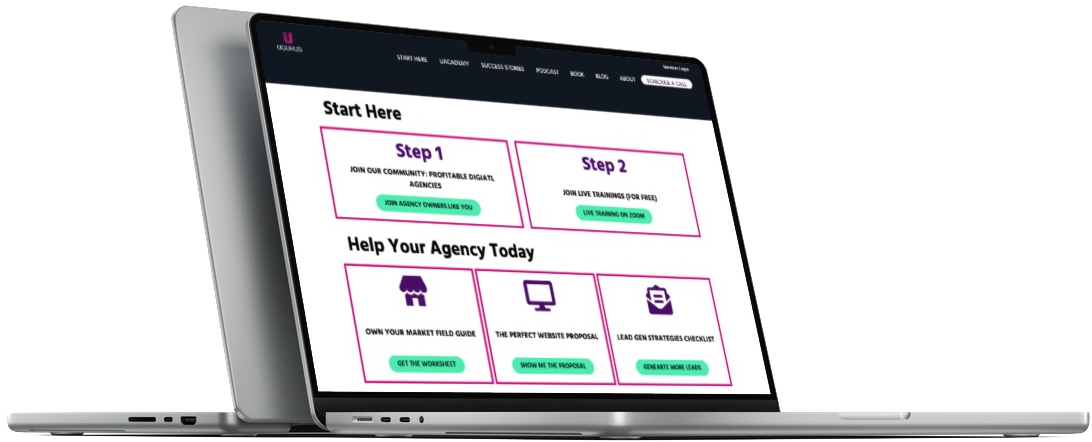You’ve got a great message, and your solutions are second to none! So, how can you make yourself known? How can you get your message out there so that your ideal audience becomes aware that you have the solution that they need? Awareness is the second A in the 5-A Framework, and it’s the essential step after identifying your audience.
In my last blog, I shared how we had four blog posts, a single lead magnet, and no homepage when we first launched our company website. We knew we needed to build up an audience interested in our message, and we did that by leveraging existing blogs that boasted over 100,000 monthly visitors, which helped us get massive exposure, fast.
Today, I’d like to share more about how to get published (or on a stage or podcast).
Getting Accepted
If you can’t find information on a publisher’s site about how to get access to their platform—info on whether they accept guest posts, or how to apply to speak, for example—your next best bet is to ask them.
An email that looks like this is a good place to start:
Subject: Interested in learning more…
Body:
Hey [firstname/company/etc.]—
I’ve been following [their publication name] for a bit and was wondering what it takes to publish on your platform. Do you accept content from guest contributors?
Or, you can send an email with specific headline ideas:
Subject: Potential articles for your website?
Body:
Hey [firstname/company/etc.]—
I read over your guest contributor guidelines, and I came up with three article ideas you might be interested in:
Headline 1
Headline 2
Headline 3
I want to make sure I provide the angle to help your publication in the best way I can. Would you be interested in any of the above? If not, let me know a different idea you think would resonate better.
If you’re unsure about what ideas you should pitch, think about your audience’s top three problems, and consider your top three solutions. You can even look to news sites like USA Today to get a handle on what’s popular at the moment. Mix and match these together, and you’re sure to come up with some ideas.
As you might expect, your ideas need to be interesting, but they don’t have to be the world’s best ones. You’re looking for a publisher to see something and agree—or to give you constructive feedback on what might connect better with their audience. Your taking action and making contact with publishers—even imperfectly—is far more important than opining over the perfect pitch email. Take imperfect action.
And remember—these steps are identical no matter the channel. If I were pitching conference organizers on a keynote topic, I would do the same thing: give them a few ideas for the talk and get their feedback. Podcast? Same thing: build a relationship with the host and laser in on an angle they think would resonate with their audience.
Dealing with Rejection
I often tell people that when we first started UGURUS and I was contacting publishers, I reached out to twenty-five of them. I got twenty-two “no thank you’s.” That’s a whole lot of rejection. But knowing that you’ll face inevitable rejection shouldn’t depress you in the slightest. In fact, it should invigorate you.
If you see a competitor in your market getting some success, it’s not because someone came to them one morning and said, “You’re so awesome and better than anyone else. Can you write an article for us? Can you speak on our stage?” No, it’s because they made contact with a publisher, built a relationship, pitched an idea, and—very likely—overcame a lot of “no’s.”
As it turned out, I didn’t need twenty-five publishers to publish my work. Three said yes right away, and three of the original “no’s” later came back and accepted posts once we showed them others had published. When we had those six, our market authority kicked in—and most of the rest that had said no accepted our requests.
Producing Your Content
Once a publisher has said yes to an idea, angle, or topic, you need to develop your content. I’ll dive into a winning content framework later in my blog, but the main thing to remember at this stage is that you need to meet or exceed whatever agreement you established with your publisher. Hit your deadline, stay in communication, and be flexible.
To that end, when you send them the finished product, I would soft pitch it as a “draft” and say you are open to their feedback. (However, don’t think that “draft” means you can cut corners, or submit work that you know needs editing. Your draft should be your best work, given your time and resources.)
If you can, have at least one good writer review your work and help you with clarity and grammar. If you can’t pay for help, do your best to edit on your own. Try the Grammarly app that checks your work using artificial intelligence, or an app like Hemingway that offers suggestions to make your writing clearer and more concise. Or see if you can have a friend or colleague give it a look over.
When the publisher gives feedback, take it positively and constructively. They know their audience better than you do, so if they ask for a tweak or change, do your best to comply and make it better.
Some of my clients take constructive feedback as rejection. It’s not. Even if it’s delivered harshly, any feedback from a publisher represents an opportunity to improve. Make the changes and send your revised material back for another round of approval.
As long as a publisher is engaged with you, you are in the game and making progress.
Promoting Your Content
Once your publisher has accepted your content, you’ll have to wait to see the fruits of your labor. If it’s a blog post being published or a podcast interview, this could mean a few days—or possibly weeks (or months). I’ve waited for content to go live for more than six months.

Learn more about applying the 5-A Framework to your business in my new book, Get Rich in the Deep End, order here.
But once your content is published, do your best to draw as much attention to it as possible. Share it on social media. Email your list. Get the word out. If you are speaking at an event, promote it.
If the content is public, like on a blog or on a podcast, engage with the audience. Answer questions people ask in the blog post comments. Reply to tweets. Review the podcast and say how awesome it was for you to be a guest.
In short, do everything you can to call attention to your great work—just as if it was published on your very own website. This will help you leverage this piece of content for your own audience, and it will set you up for success with the publisher in the future.
That level of relationship is essential because once you’ve been accepted by a publisher, you have a better chance of working with them on a regular schedule. That makes the whole process go much smoother and faster.
I have publisher relationships where I drop an email to them once a month with headline ideas, they respond, and I write. That means I’m never worried about whether they’ll get back to me. (Which, let me tell you, is a welcomed thing.)
Next time, I want to introduce you to the 3rd A in the 5-A Framework: Attract. It’s pretty powerful, so be sure to come back.
In the meantime, if you want to learn more about Awareness, the 2nd A in the 5-A Framework, order a copy of my newest book, Getting Rich in the Deep End. The book great tips, bonuses, and goes into more detail on all of the various ways you can own your market. Check it out.
GET YOUR FREE AGENCY ACCELERATOR PACKAGE







